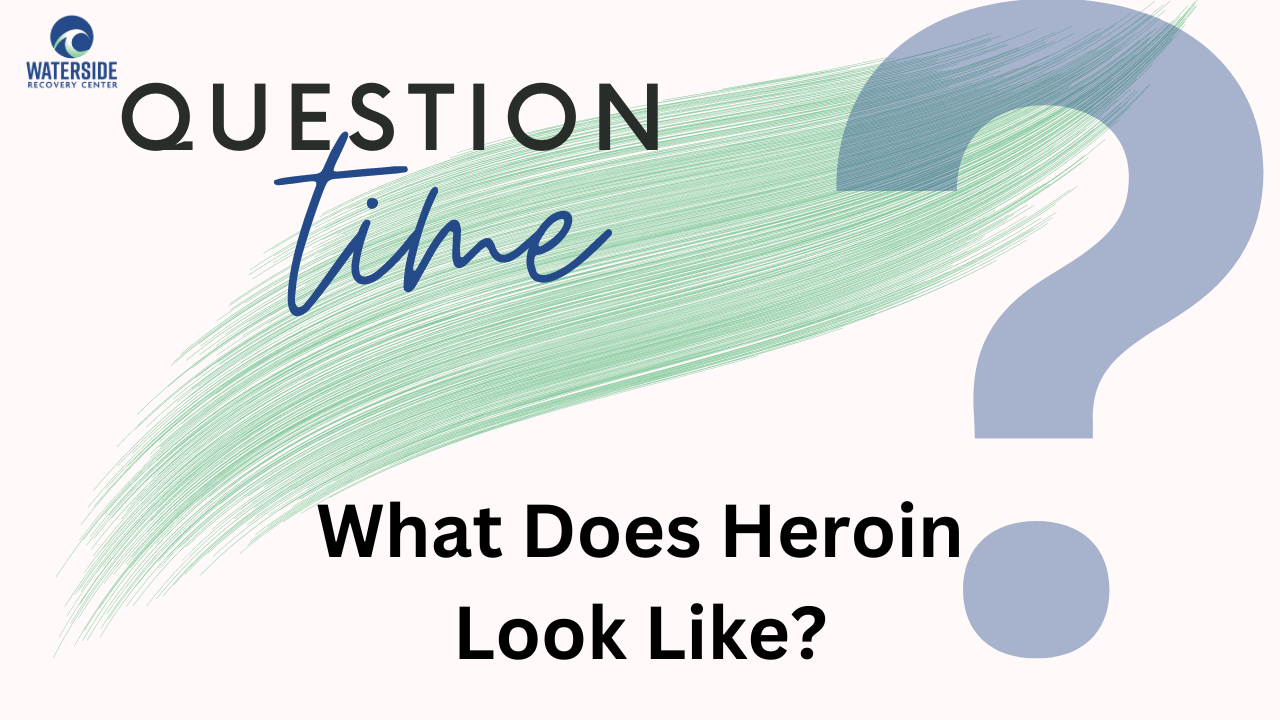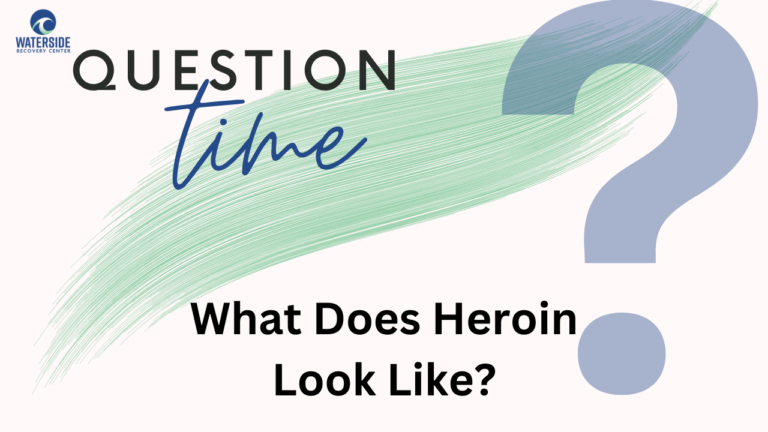
What Does Heroin Look Like? A Comprehensive Guide to Identifying the Drug
Heroin is a highly addictive drug that belongs to the opioid family. It is a derivative of morphine and is typically sold as a white or brownish powder. Heroin is a dangerous drug that can cause severe health problems, including overdose and death.
One of the most common questions asked about heroin is what it looks like. Heroin can come in various forms, including powder, tar, and black sticky substance. The color and texture of heroin can vary depending on its purity and the method of production. However, the most common form of heroin sold on the street is a white or brownish powder.
It is important to note that the appearance of heroin can be deceiving. Heroin is often mixed with other substances, such as sugar, starch, or powdered milk, to increase its volume and weight. These additives can affect the color and texture of heroin, making it difficult to identify the drug with the naked eye. Therefore, it is crucial to seek professional help if you suspect someone is using heroin.
Physical Characteristics of Heroin
Color Variations
Heroin can come in various colors, ranging from white to dark brown or even black. The color of heroin can depend on the purity of the drug and the substances it has been mixed with. White heroin is typically more pure than brown or black heroin, which may contain additives like caffeine or other drugs.
Texture and Consistency
Heroin can have a powdery or sticky texture, depending on its form. Powdered heroin is typically snorted or dissolved in water and injected, while sticky heroin is often smoked. The consistency of heroin can also vary depending on its purity and form.
Common Forms
Heroin can be found in different forms, including powder, tar, and rock. Powdered heroin is the most common form and is typically sold in small packets or bags. Tar heroin is a sticky, black substance that is usually smoked. Rock heroin, also known as “black tar,” is a solid form of heroin that can be broken down into powder or melted for injection.
Overall, it is important to note that the physical characteristics of heroin can vary widely depending on its source and purity. It is always best to seek professional help if you or someone you know is struggling with heroin addiction.
Heroin Identifier. What Heroin Looks Like. How To Identify Heroin
The following images show a few different examples of Heroin. These images are from the DEA website.
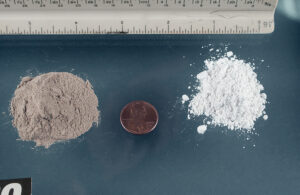
Heroin Powder. This form can differ in color and consistency. Typically, the purer the form, the whiter the powder.
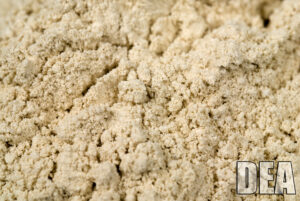
Closeup photo of heroin powder. The consistency can vary, but this is a close up image of the powdered version of heroin
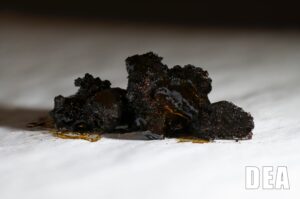
Black tar heroin. This form is most commonly found in the southern and western parts of America. It can be sticky and hard to the touch.
Heroin Packaging and Paraphernalia
Typical Packaging Methods
Heroin is often packaged in small, tightly wrapped plastic bags or in small glassine envelopes. The packaging is usually designed to be easily concealable so that it can be transported without detection. The bags or envelopes are often stamped with a logo or symbol that is unique to the particular batch of heroin. This can help to identify the source of the drug and may also indicate its purity level.
In some cases, heroin is packaged in capsules or tablets that are meant to be swallowed. This method of packaging is less common, but it does exist. The capsules or tablets may be colored or marked with a logo or symbol, similar to the plastic bags or glassine envelopes.
Associated Drug Paraphernalia
Heroin use is often associated with a variety of drug paraphernalia, including needles, syringes, and spoons. These items are used to prepare and inject the drug. Needles and syringes are used to draw the heroin into the syringe and then inject it into a vein. Spoons are used to heat the heroin and mix it with water before it is drawn into the syringe.
Other drug paraphernalia that may be associated with heroin use include cotton balls or filters, which are used to filter out impurities from the heroin before it is injected. Lighters or matches may be used to heat the heroin on the spoon. Aluminum foil may be used to smoke the drug, although this method of use is less common than injection.
It is important to note that the use of drug paraphernalia is often associated with a high risk of infection and disease transmission. Sharing needles or other drug paraphernalia can lead to the transmission of HIV, hepatitis, and other blood-borne diseases.
Commonly Asked Heroin Questions
Understanding heroin and its effects can be challenging. In this section, we answer commonly asked questions about heroin, providing clear and concise information to help you stay informed.
Is Heroin a Depressant?
Yes, heroin is a depressant. It belongs to the class of drugs known as opioids, which slow down the central nervous system. This results in slowed breathing, decreased heart rate, and a sense of relaxation and euphoria.
Can You Smoke Heroin?
Yes, heroin can be smoked. Smoking heroin, also known as “chasing the dragon,” involves heating the drug on a piece of foil and inhaling the vapor. This method allows the drug to enter the bloodstream through the lungs.
Can You Snort Heroin?
Yes, heroin can be snorted. When heroin is snorted, it is absorbed through the nasal tissues into the bloodstream. This method produces a rapid high, although not as fast as injecting or smoking.
How Long Does Heroin Stay in Your System?
Heroin can be detected in the body for different durations depending on the testing method:
- Urine: Up to 3-4 days
- Blood: Up to 6 hours
- Saliva: Up to 24-48 hours
- Hair: Up to 90 days
What Color is Heroin?
Heroin can vary in color. It typically ranges from white to brown powder, but it can also be found as a black sticky substance known as “black tar heroin.”
What Does Heroin Smell Like?
Pure heroin has very little smell, but street heroin can have a vinegar-like odor due to the chemicals used in its production. The smell can vary based on the impurities and additives mixed with the drug.
How Long Does a Heroin High Last?
A heroin high usually lasts between 4 to 6 hours. However, the initial euphoric rush only lasts for a few minutes, followed by a sense of relaxation and sedation that can last for several hours.
How Much Does Heroin Cost?
The price of heroin varies widely based on location, purity, and availability. Generally, a small dose (about a tenth of a gram) can cost anywhere from $10 to $20. Larger quantities, such as a gram, can range from $60 to $150. Prices can fluctuate significantly depending on regional differences and market conditions.
What Does Black Tar Heroin Look Like?
Black tar heroin is a dark, sticky substance that resembles roofing tar or black licorice. It can also appear as a hard, brittle chunk. Unlike powdered heroin, black tar heroin is often impure and contains various additives and contaminants.
How Much Does Heroin Last?
The effects of heroin can last for several hours, typically between 4 to 6 hours. The initial euphoric rush is short-lived, lasting only a few minutes, followed by a period of drowsiness and sedation that can persist for hours. The duration can vary based on the method of use, the purity of the drug, and the individual’s tolerance.
At Waterside Recovery Centers we pride ourselves on providing the top addiction treatment in Massachusetts. With a range of evidence-based, client-focused and individualized treatment offerings, we are able to provide the ideal support for those seeking recovery from substance addiction. Please feel free to reach out to our help line at anytime.
(833) 985-4234

